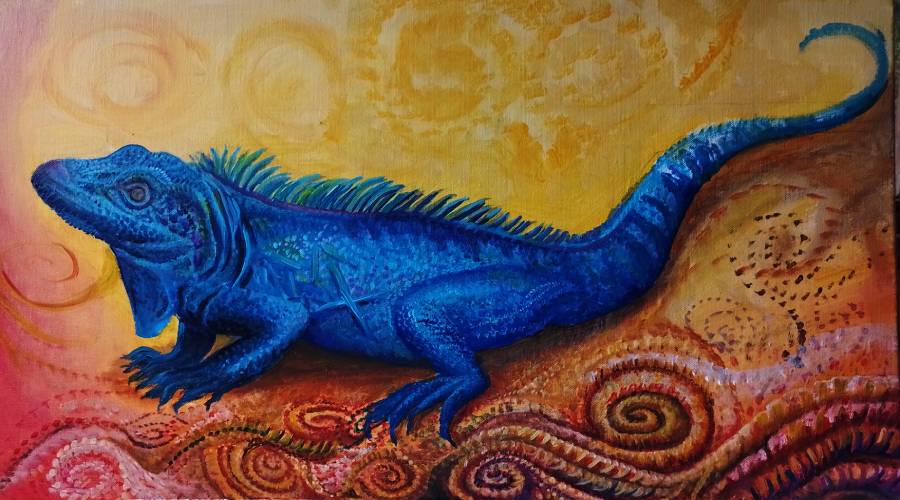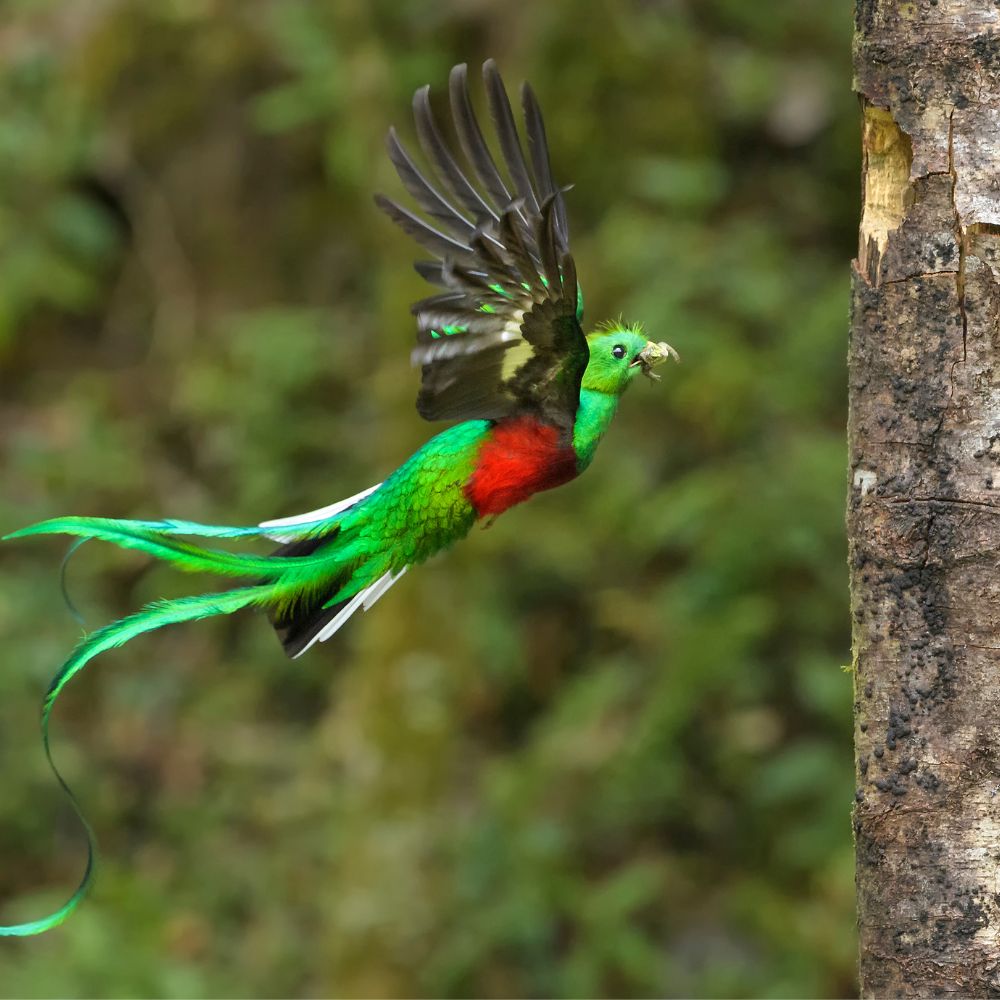Art is the ultimate freedom. Freedom to be, to feel, and to let go of thought and immerse in Life.
Continue readingMonkeys in Manuel Antonio, all you need to know
Monkeys in Manuel Antonio are among the most fascinating and captivating creatures we encounter on our tours. There are four kinds of monkeys in Manuel Antonio National Park. These primates are not only a must-see for tourists, but they also help keep the park’s ecosystem healthy.

The four monkey species in Manuel Antonio National Park are the White-faced Capuchin, the Mantled Howler Monkey, the spider monkey, and the Central American Squirrel Monkey. Each species has unique characteristics and behavior patterns that make them fascinating to observe.
In this post you will find:
[ez-toc]
Where are the monkeys in Manuel Antonio?
You can see monkeys in Manuel Antonio almost everywhere. Particularly on the road to the National Park and in the forests that surround the hotels and AirBnBs on Espadilla Beach, as well as on the paths and beaches of Manuel Antonio National Park.
The White-faced Capuchin Monkey
The White-faced Capuchin Monkey is one of the most intelligent monkeys found in Central and South America. These monkeys are highly social and form groups of up to 20 individuals. They are omnivorous and eat a wide variety of foods, including fruits, insects, small animals, and even carrion. They are also known for their use of tools, such as using rocks to crack open nuts.

One of the most interesting aspects of the White-faced Capuchin Monkey’s behavior is their use of vocalizations. They have a wide range of calls that are used to communicate with each other, including alarm calls, food calls, and contact calls. Their vocalizations are so complex that researchers have identified over 40 different calls used by these monkeys.
They are frequently seen looking for food near where visitors to Manuel Antonio National Park stay, as well as around the area’s restaurants and hotels.
The Mantled Howler Monkey
The Mantled Howler Monkey is another species found in Manuel Antonio National Park. As the name suggests, these monkeys are known for their loud and distinctive vocalizations, which can be heard up to three miles away. The howling is used to communicate with other members of the group and to establish territorial boundaries.

Unlike the White-faced Capuchin Monkey, the Mantled Howler Monkey is primarily a folivore, which means they primarily eat leaves. They have a specialized digestive system that allows them to break down tough cellulose found in leaves. They also occasionally eat fruit and insects, but leaves make up the majority of their diet.
Central American Squirrel Monkey
The Central American Squirrel Monkey is the smallest monkey found in Manuel Antonio National Park. They are highly social and live in groups of up to 100 individuals. These monkeys are diurnal, which means they are active during the day, and their diet primarily consists of fruit and insects.

The sunbathing behavior of the Central American squirrel monkey is also well-known. These monkeys will spread out their arms and legs to absorb the warmth of the sun, and some researchers suggest that this behavior may be used to reduce the risk of vitamin D deficiency.
Spider Monkeys
These primates are known for their long, slender arms and prehensile tails, which they use to move through the forest canopy with incredible agility. Spider monkeys are primarily frugivores, meaning they primarily eat fruit. They have an important role in seed dispersal, as they eat fruit and then spread the seeds throughout the forest, helping to maintain the park’s biodiversity.

Spider monkeys are also highly social and live in groups of up to 35 individuals. Unfortunately, like the other monkey species in the park, they too are facing threats from human activity. It’s important for visitors to respect the monkeys’ space and avoid feeding them, as this can lead to aggressive behavior and health problems. Overall, spider monkeys are an important part of Manuel Antonio National Park’s ecosystem, and they are a very interesting species to watch.
The role of monkeys in Manuel Antonio
In addition to their fascinating behavior and characteristics, monkeys play an essential role in the ecosystem of Manuel Antonio National Park. As seed dispersers, monkeys help to maintain the balance of the forest ecosystem.
When monkeys eat fruit, they disperse seeds throughout the forest, allowing new plants to grow in areas that may not have had them before. This helps keep the forest’s diversity and makes sure that different kinds of plants and animals can live and grow.
Challenges of monkeys in Manuel Antonio
However, the presence of humans in the park has created some challenges for the monkeys. As visitors to the park have increased over the years, so have incidents of human-monkey interactions. Feeding monkeys is strictly prohibited in the park, as it can create a dependency on humans and lead to aggressive behavior towards visitors. It can also be bad for the monkeys’ health because they might get used to eating things that aren’t part of their natural diet.
To help protect the monkeys in Manuel Antonio National Park, it’s essential that visitors adhere to the park’s rules and regulations. This includes not feeding the monkeys, staying a safe distance away from them, and disposing of all trash properly to avoid attracting the monkeys to areas frequented by humans.
To Sum It Up
The White-faced Capuchin, the Mantled Howler Monkey, Spider Monkeys, and the Central American Squirrel Monkey each have unique characteristics and play a critical role in maintaining the balance of the forest ecosystem. When you see them in the wild, respect them, don’t get too close, do not feed them, and if you happen to be underneath them: keep your mouth closed.
If you want to see the monkeys in Manuel Antonio, or sloths and many other creatures, contact us, and we’ll make it happen!
This post was published first on https://epicadventurescr.com/monkeys-in-manuel-antonio-what-you-need-to-know-about-them/
Am I a monkey dreaming that I am God? Or a god, dreaming he is a monkey?
Monkey dreaming he is god, god dreaming he is a monkey? I don’t think we can ever know the answer, beyond the experience we perceive from one corner of consciousness or another.

I have the good fortune to live next to a tropical cloud forest in Monteverde, Costa Rica. And probably the capuchin monkeys in the area are my most constant visitors.
I love to see them, and from time to time, voluntarily or involuntarily, I have given them fruit. And then they come back and back.
I was watching them at length today. On the one hand, from the inevitable painter, and on the other, from the philosopher who seeks in her nervous and small gaze the answers to the only two important questions. “What am I, and what is God?”
Am I a monkey who dreams that I am God? Or a god, dreaming he is a monkey?
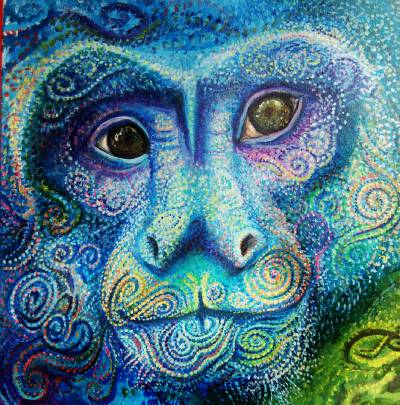
The issue here is that I pay too much homage to Sapiens, this definition in which we are half monkeys and half gods and with which we console all mysteries.
Sapiens is that right? Like a canteen in the middle of an intersection. I can choose the monkey, or I can choose the god. Perhaps that is the only prerogative of our tiny, powerful free will.
If I choose the monkey, I enter the persistent illusion of time.
If I play the god,…Oh! That is not a decision. Because “god” is, in the end, the fucking mystery of consciousness.
The only decision I make – more often than I would like to admit – is to forget about the All that I am in order to concentrate on the small expression of a monkey. The god is not perceptual. What analyzes this is the monkey, always looking for eternities where they have not been lost.
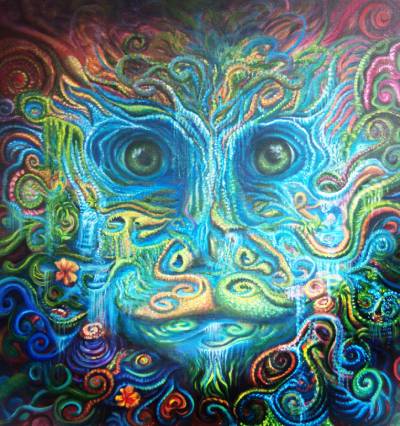
I say “god” like saying “papaya” or “feather” or “number two”. It is a term to define the mystery that I do not understand, but that is there, inevitable. I am aware. There is no way around this tough question. I exist and perceive.
The point is that I perceive even the thought that says I perceive.
The thing is, I don’t know if I ever think anything, or feel anything from the mystery of my consciousness.
I see this… Who? Who sees?
The body… The body sees. No, the body transmits the image. I perceive it… What the fuck is “I”?
Like a drunk-drinking unconsciousness, I perceive myself asking questions, searching for truths. (I only describe here how the consciousness moves). A la Amelie, I can’t help but imagine Ipathia, Plato, Jesus, and Buddha discovering this same truth: “I have no idea what I am. No idea.”
And I have no idea what I’m communicating with. No idea. I call him god. As if saying papaya. The name does not matter. I communicate with something, always. Inevitably. I perceive and communicate.
Do I perceive that I am communicating? I don’t know either.
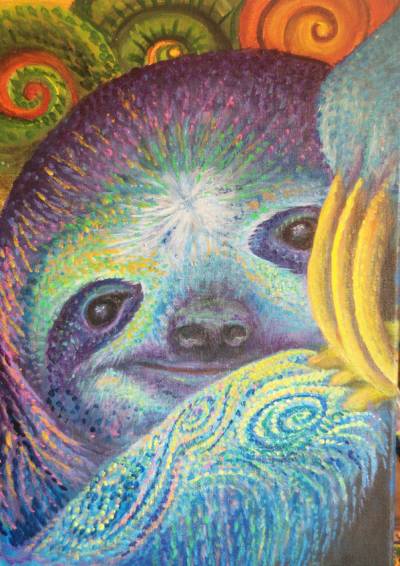
I cannot define true communication. It connects, it is an experience. Communication is also illusory.
Beyond communication there is something. There is everything. Beyond is the mystery. The “other” that exists and I don’t know what it is.
Do I feel reverence for that “other”? I do not know. The CM tells me that feeling it is obvious. But how can I revere what I don’t know what it is?
Yesterday I read something that touched me: The skeptic reads all the books and still doubts everything. The religious person reads only one book and does not question anything.
It makes me laugh, because I can put myself in both perspectives, and both are right.
If I think of the Course (that “only” book that came to answer almost all my real questions), the experience of the Course – which is not in itself a pyrotechnic moment – is a permanent solution, a true “washing of sins”, incomprehensible and ineffable.
The permanent result of the forgiveness that defines A Course in Miracles makes it somehow impossible to doubt it. The ineffable experience that you are at Peace with something with which at some point you had a dramatic and violent war? That one? I can neither deny it nor doubt it. I live it, permanently.
First of all, whether “The Other” exists or not, whether we are a biochemical phenomenon separated from everything (even writing it sounds SO primitive to me), whether we are, at last, a monkey dreaming that he is god, the experience of living is present. Incomprehensibly.
And it doesn’t matter in the slightest, who dreams up this pod because Pink Floyd, in their Pulse concert in 1994, is absolutely awesome. 🙂
Thank you for reading me.
Why Content Writing is important for your website?
Content writing is the process of creating written material for websites, blogs, and other online platforms. The quality of this content is critical to the success of any online business or organization.
Continue readingSelf-Awareness, the key to freedom
Self-awareness is the ability to recognize and understand one’s own emotions, thoughts, and behaviors, and their impact on others. It involves having a clear perception of one’s personality, strengths, weaknesses, beliefs, values, and goals. Being self-aware helps one make better decisions, improve relationships, and achieve personal growth. By becoming more in tune with one’s own emotions and reactions, one can take steps to manage them more effectively and lead a more fulfilling life.
Continue readingSelf Empowerment from a free spirit point of view
Personal Empowerment, from where I see it has to do with self-awareness, confidence, a sense of purpose, mindfulness capacity, and positive relations.

Anyone who knows me can attest that I’ve experienced some major up and downs and rounds and rounds. I am a single mother of five, from four different fathers, and I was a freelance tour guide throughout their childhood. That alone tells you about self-empowerment.
Not only the fact that I’ve lived my life outside of the conventional paths, but I also kept on being independent and pursuing my passion, even with the toughest of responsibilities.
I know about self-empowerment… Else I wouldn’t have survived decades of continuous emotional chaos and terrible mental stress.
I wanted to be responsible with the children, but I also wanted to travel. I wanted to travel but then again, in order to do it, I took on the needs and desires of my passengers on tour.
I wanted to take on my compromises, but a major part of my responsibility, according to my inner core values is to be happy and free.
It was a conundrum, that up till today, I have no idea how to manage. Be happy and free, but responsible and compromised. It sounds like an oxymoron.
The aftermath is as chaotic as the epic tale itself:
I lost my complete inheritance in the process and probably made tons of mistakes in the raising of my children (That is another blog on its own), I became an expert at hurting myself and ended up shielding myself from romance not to lose my mind. However, I’ve lived. Truly, intensely, and grossly at times. But whatever I did, and whatever I do, up until today, comes from a deep unfathomable confidence in myself.
So, I want to write a little about Self Empowerment, because although it has been one of my biggest challenges, it has also been the stepping stone I’ve used for any endeavors.
Self Awareness:

Self-empowerment begins with self-awareness. It’s about understanding who I am, what I believe in, and what motivates me. As I’ve grown older, I’ve taken the time to reflect on my life experiences and identify patterns in my thinking and behavior. This introspection has given me a deeper understanding of myself and has allowed me to make more informed and authentic decisions about my life.
Read more on self-awareness here.
Understand and accept my emotions
Another important aspect of self-empowerment is understanding and managing my emotions. I’ve learned that when I understand my emotional triggers, I can make more conscious choices about how I respond to them, rather than allowing my emotions to control me.

This has made me more emotionally stable and resilient and has reduced stress and anxiety in my life.
Communication Skills
I’ve also found that self-empowerment allows me to communicate more effectively with others. By understanding my own thoughts and feelings, I’m better equipped to articulate my needs and perspectives, which has led to more productive and fulfilling relationships.
Additionally, I’m more confident in my abilities and less likely to seek validation from others, which has allowed me to build stronger relationships based on mutual respect and trust.
Sense of Purpose
Furthermore, self-empowerment has allowed me to pursue my passions and interests with greater purpose and determination.
 I’ve learned to set goals that align with my values and aspirations, and I have the confidence to pursue these goals with passion and dedication. This has led to a greater sense of purpose and fulfillment in my life.
I’ve learned to set goals that align with my values and aspirations, and I have the confidence to pursue these goals with passion and dedication. This has led to a greater sense of purpose and fulfillment in my life.
Self-Acceptance
Lastly, self-empowerment has helped me to be more accepting and compassionate toward myself. I’ve learned to extend grace and forgiveness to myself, rather than constantly seeking perfection. This has cultivated a greater sense of self-love and self-acceptance, which is essential for overall well-being and happiness.
To wrap it up
In conclusion, self-empowerment has had a profound impact on my life. It has allowed me to overcome challenges, build stronger relationships, pursue my passions, and cultivate self-love and self-acceptance. I would encourage anyone, regardless of age, to invest time and effort into self-empowerment, as it has the potential to greatly enhance one’s life and overall well-being.
The Allure of Monteverde
As a naturalist tour guide in Costa Rica and as the nomad I am, I’ve lived in several different places in and out of my country. There is nothing like Monteverde. It is as simple as that. At least not for me.
This post appeared first in https://blog.ocoteahotel.com/whats-the-allure-of-monteverde
[ez-toc]
Up in the Tilarán Mountain Range, Monteverde is a small community that extends for 11 kilometers from one tip to the other. It has several cloud forest reserves, and it has also developed an exciting adventure hub, with outdoor activities along with several restaurants and pubs.
For decades, I have enjoyed the reserves in both tourist and non-tourist seasons. Whether leading large groups or walking with individual tourists, I have walked the cloud forest trails countless times. throughout three decades working in the travel industry, and every time I leave, I feel a longing in my heart, looking at the treetops moving with the wet winds. The wave-like sounds of the forests call me from a distance.
Like other lovers of the forest, I tend to be a free spirit. When locked in for some time, I begin losing my joy. When the pandemic started, I returned from an extended stay in Mexico City, and, for a change, I decided to move to Monteverde. There were two simple reasons: my daughter lived here, her apartment was vacant and relatively affordable, and I could take walks through beautiful natural habitats without fear of getting ill (pandemic times).
Little did I know that my heart would be planted as a seed in the forests of this breathtaking place.
Monteverde is alluring for a world of reasons: diverse, stunning natural beauty, delicious food, a spirit of sustainability….
And as it is a beautiful cocktail of all these features, I’ll do my best to share with you a little taste of each one..
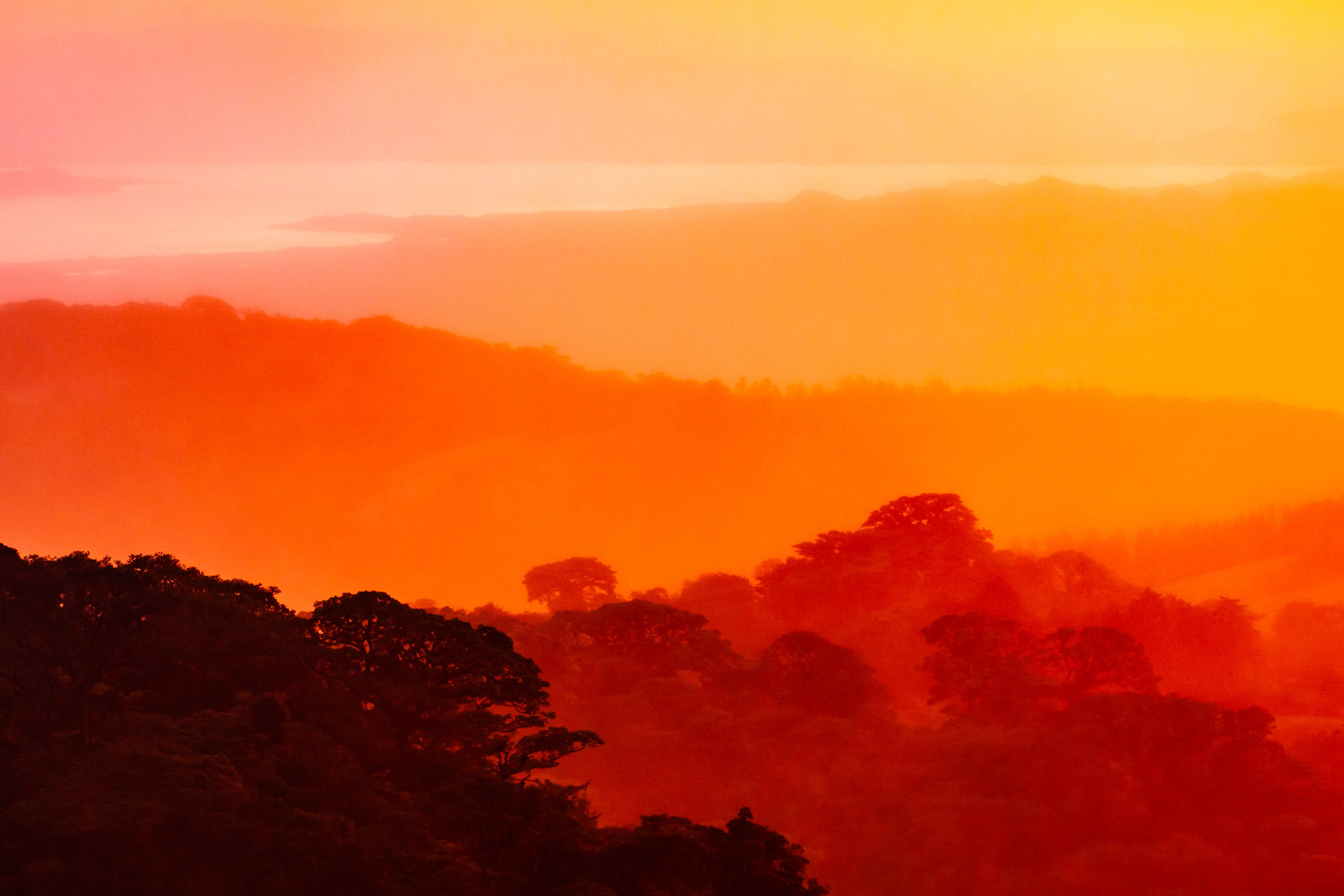
The Natural Beauty of Monteverde
Monteverde is a gorgeous place. No doubt about it. Wherever you look, there is a picture to take. I could even say it is designed to be photographed.
Its fantastic weather intensifies that beauty. In the mornings, you can see the faraway ocean landscapes and the breeze moving the trees. In the afternoons, it turns dramatic. Depending on the season, you may get to watch distant thunderstorms or marvel at the watercolor sky.
And its name couldn’t be more accurate. In Monteverde, you can spend a lifetime counting shades of green.
To accentuate the range of greens is a rainbow of bright reds and yellows in its flowers and birds. And quite often, you will get a glimpse of the iridescent blue morpho fluttering around. My favorites are the days when the sunny season merges in with the Caribbean gusts blowing through the mountains, and there is a rainbow almost wherever you look.
When walking through Monteverde, I often stop every few paces to take in different landscapes, try to spot a casual rare and pretty bird, or catch sight of the surreal, moving clouds in the sky.
But its external beauty is only the visible symbol of what lies beneath. The true magnificence of Monteverde lies deep within, hidden like a treasure to be found.

The Quaker Culture
Monteverde has existed since the 1920s as a tiny village with a few families struggling to live in a very remote area of Costa Rica, some of them working the land, some of them at the nearby gold mines.
When Quakers came in the 1950s, their presence changed this little community forever, not only for the inhabitants of this region but for generations to come and throughout the world.
In 1951, eleven Quaker families arrived in Monteverde. They chose Costa Rica because the country abolished its army amid the early Cold War. They were looking for a home welcoming conscientious objectors as they refused to participate in the Korean war due to their pacifist views.
Quakers around the World work actively to make this a better world. They are mainly concerned with human rights and believe in the equality of all human beings, social justice, peace, freedom of conscience, and environmental issues. Quakers seek to live simply to reduce the burden on the World and community life and found a welcoming country in Costa Rica. (1)
When you walk through Monteverde, you see these values everywhere. You will notice among the locals’ everyone says hi to you as a visitor. Between them, you will also notice children playing in the plazas -even singing riddles and nursery rhymes! You will undoubtedly notice a sustainability movement that goes from the garbage collection to the number of artisanal products offered in the stores.
Quakers preserved the Monteverde Cloud Forest as a water source, but more importantly, they taught the coming generations to preserve the rest of the forests in the area.
The Community of Monteverde
As I said previously, the first thing that may call your attention as you walk in Monteverde is how everybody says hi. Not because you are a visitor, but because you are a human. The Monteverde community values people.
With around 5000 people, Monteverde is flooded with a floating population of younger citizens who work every year in different hotels and tourist attractions. Nowadays, there is also a remote workers population coming to live in the region from all over the country. And, of course, 250,000 visitors a year fill its trails, hotels, and restaurants.
However, Monteverde gets a very particular kind of visitor. We usually don’t get the loud party-goers, and it’ll be extremely unlucky if you find a group of spring breakers making noise anywhere. The people who come to Monteverde are usually nature lovers who enjoy adventure, hiking, and bird watching.
The community is a loving mix of original Monteverde, Quaker families, and many expats that decided that Monteverde is a great place to retire and live a healthy, peaceful life.
Throughout, a vital spirit of service and community drives the town.
In 2010, the residents created the Monteverde Community Fund. To date, the Fund has financed projects in economic, social, and environmental sectors and trained and supported the teams behind them. They support an array of efforts valued by neighbors and stakeholders–from municipal wastewater treatment to reforestation projects to movement and exercise programs.
Since 2012, the Monteverde Community Fund supported 16 grassroots projects and organizations, leveraged more than $80,000 in small grants, and connected Monteverde organizations with ample funding sources and relevant expertise. (2)
This is a place where the inhabitants support each other in many ways, whether they are old or young, elderly citizens or mothers with children, artists and dreamers, and conservationists… all are welcome here.

Delicious Food!
Monteverde has a population of 5,000 people. Here you don’t find Ubereats. You won’t find a single Mcdonald’s or KFC. Not one single fast-food renowned brand. But there are so many options to eat it is almost ridiculous! And some of these restaurants offer so many different choices!
In Monteverde, you will find Mexican and Peruvian distinctive cuisine, several breweries, delicious burgers and fried chicken, sushi and oriental eateries, excellent steak houses, and delicious typical Costa Rican food cooked by the grandmas of Monteverde.
Ingredients are very fresh, either because of the multiple organic nurseries in the region or because we are only an hour and a half from the port of Puntarenas, the fishing gateway of Costa Rica.
And you can even download an App “Monteverde En Casa” to order some of these wonders for your room in the Ocotea Hotel.
Sustainability in Monteverde
In Monteverde, environmental efforts abound. This is a place where conservation and “ecotourism” have enabled an innovative development model centered on the collaborative efforts of commercial businesses, government agencies, and foreign partners.
In fact, Monteverde has become a model that leads the Costa Rican environmental patterns.
With support from the Costa Rican Tourism Board (ICT) and the Culture Ministry (MCJ), the region plan for its continued growth include some of the following developments as a way to become a symbol of genuinely sustainable ecotourism:
- Hiking: Extend, improve, and grow the neighboring San Luis community’s trail network. These are all part of the Pacific Slope Trail system (3).
- Training: Provide high-level training to tour guides and environmental educators that will enable them to instruct and stimulate visitors.
- Parking: Build a parking lot in downtown Santa Elena to relieve traffic congestion.
- Regulating: Conduct technological and legal research to create norms for appropriately regulating some sectors of growth.
- Conserving: Create a complete sanitation system centered on recovering resources such as water, energy, and nutrients for local consumption.
Together, these efforts protect one of the most precious resources of Monteverde…
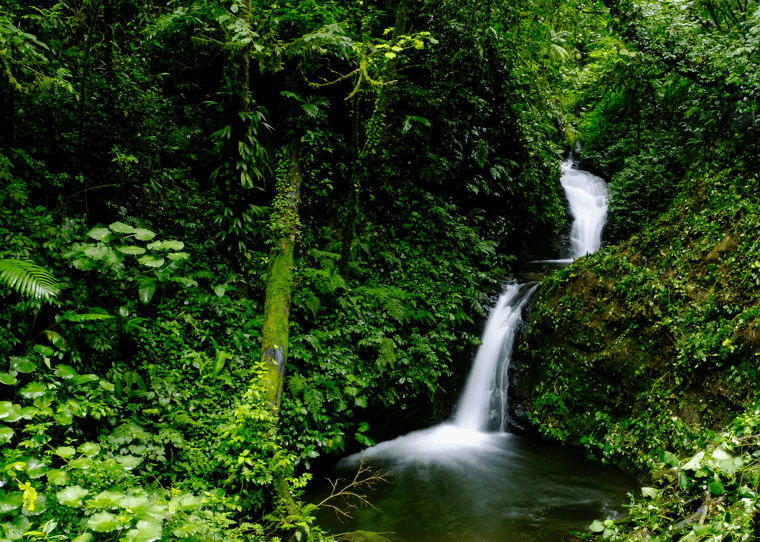
The Nature of Monteverde
Last but never least! Monteverde’s rich ecosystems are one of the most privileged sights in the world. With a richness that can fill your senses at every step, the breathtaking cloud forests are a scenario to stop and behold.
Biodiversity is an inherent feature of the Monteverde Cloud Forest. It is estimated that this area has approximately 50% of Costa Rica’s biodiversity, which is an astonishing 2.5% of the entire World’s biodiversity.
Flora
More than 3,200 plant species have been discovered in Monteverde. This is nearly as many plant species as there are in the entire country of Canada. The high humidity levels and dark understory are critical factors for the emergence of epiphytes (such as bromeliads or orchids). Monteverde also has around 700 tree species and 500 orchid species, making it one of the most orchid-rich regions on the planet.
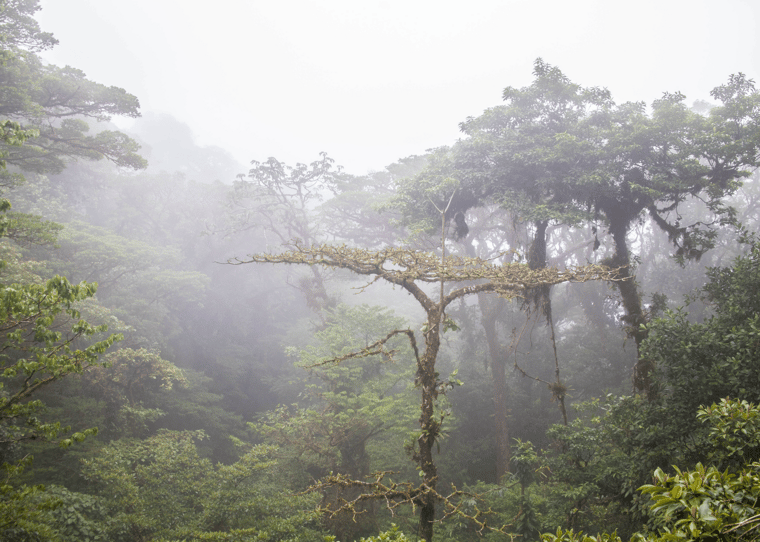
Monteverde
In all, about 10% of the plant species in Monteverde are endemic, which means that they are found nowhere else in the world. A truly special place to visit indeed, and this region has diverse species to match!
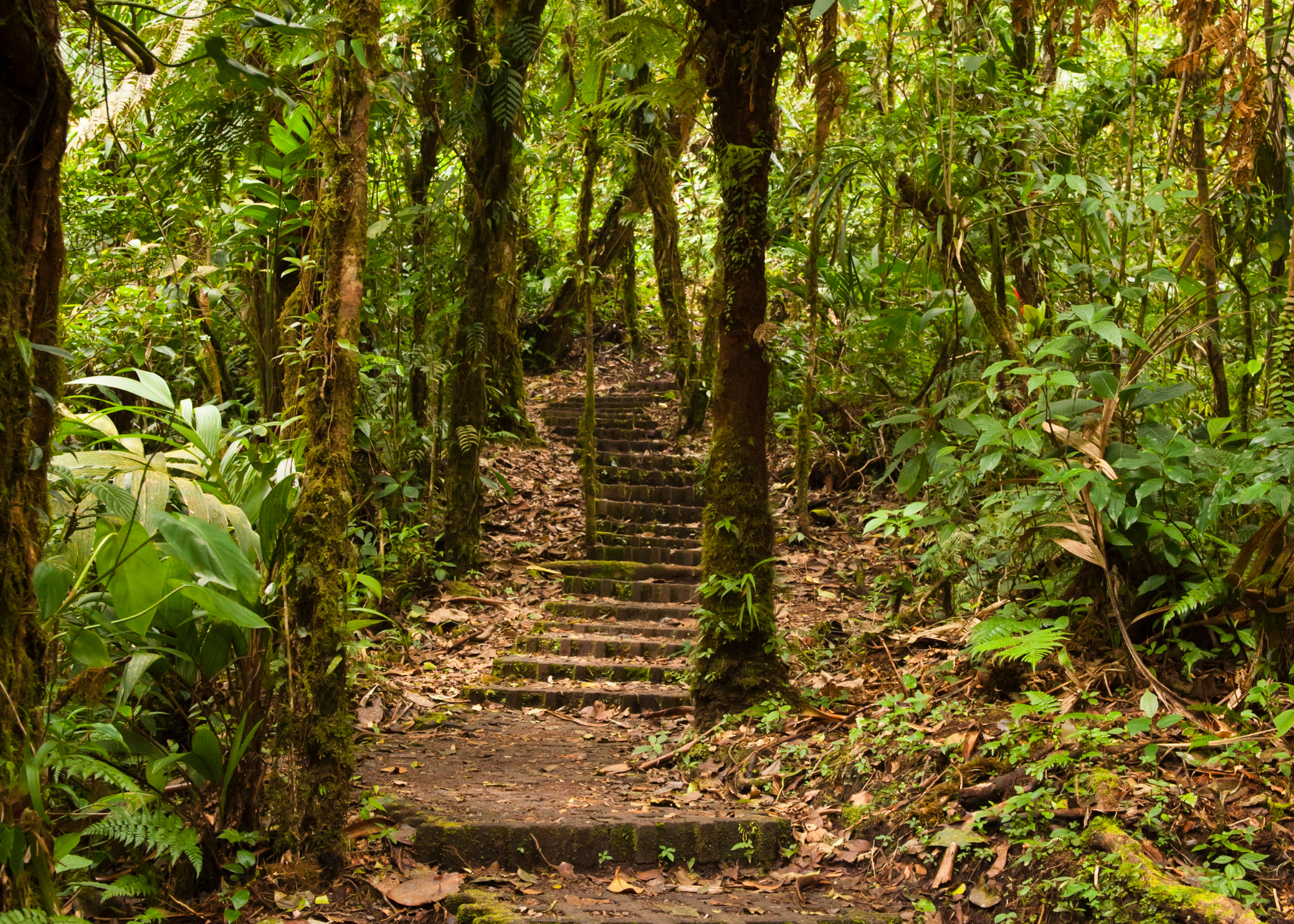
Fauna
Monteverde is also home to 425 bird species, 120 mammal species, 60 amphibian species, and 101 reptile species. A total of 658 butterfly species and 100 dragonfly and damselfly species have been identified.
And there is still much to discover! Other insects, fungi, and microbes have not been as thoroughly researched, and speak to a world still somewhat undiscovered.
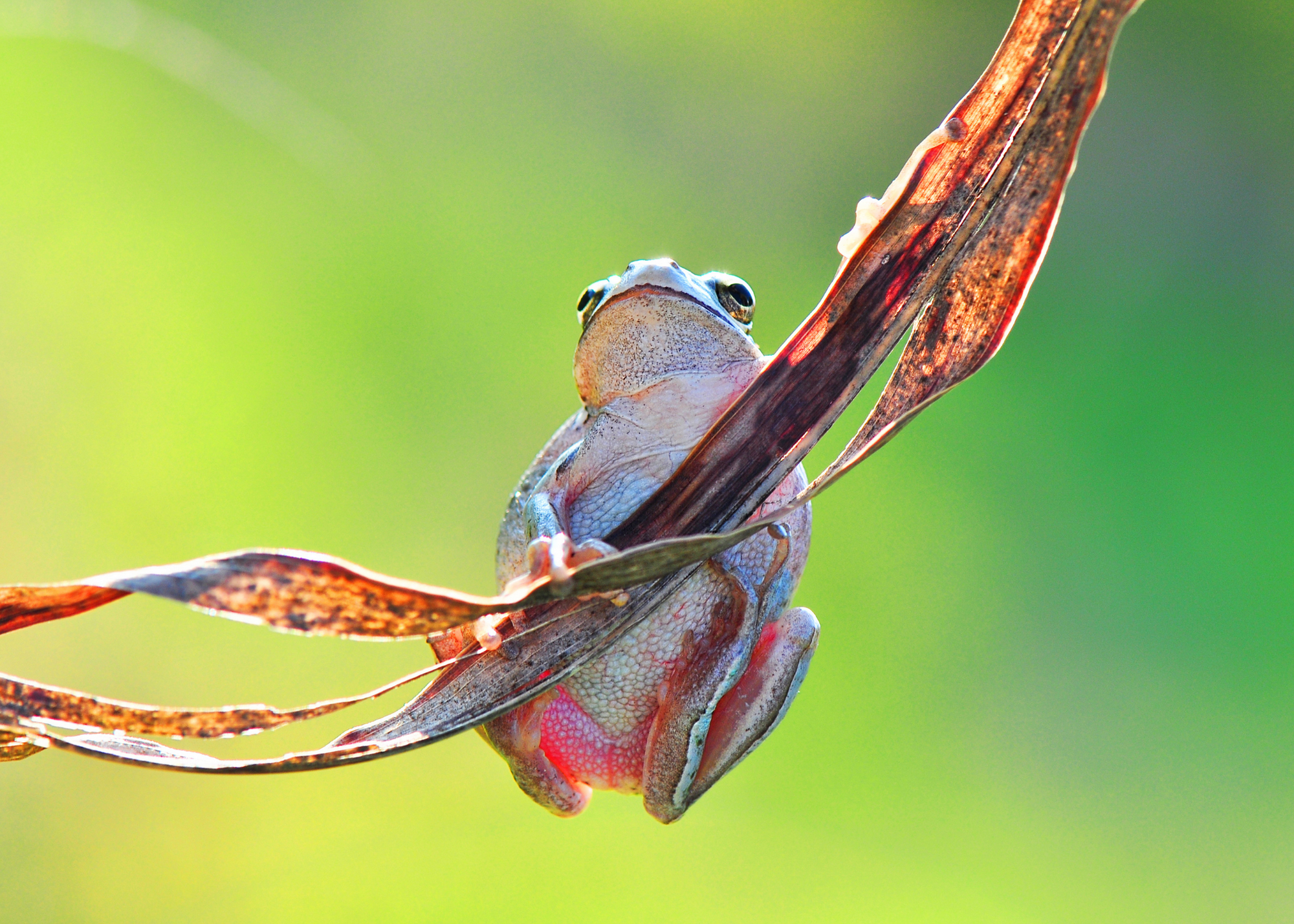
Where to See This Astonishing Nature
There are several different clouds and rainforest preserves in the area, but the most important are:
The Monteverde Cloud Forest Reserve
The Monteverde Cloud Forest Reserve began in 1972 with 810 acres (328 hectares) of forested area. It now protects 35,089 acres (14,200 ha) and eight living zones atop the Continental Divide.
It is home to around 100 mammalian species, 400 bird species, and 1,200 amphibian and reptile species. As well as the threatened three-wattled bellbird and the gorgeous resplendent quetzal, this is one of the few places left that supports all six cat species: jaguars, ocelots, pumas, oncillas, margays. Visitors can explore over 8 miles (13 km) of trails independently or with a guide.
Santa Elena Cloud Forest Reserve
The Santa Elena Cloud Forest Reserve was founded in 1989 and is run by the Santa Elena community. It was one of the country’s earliest community-controlled reserves, and it’s a great example of what people can accomplish to protect and learn from their local environment.
It has a similar plant and animal diversity as the Monteverde Cloud Forest Reserve, but it also features spider monkeys, which the Monteverde Reserve does not have. Atop its 765 acres (310 ha), an observation tower offers spectacular views of the Arenal Volcano on clear days.
El Bosque Eterno de los Niños
The “Children’s Eternal Rainforest” has particular importance to the Monteverde community. The Monteverde Conservation League (MCL) started this protected area by gathering funds from Swedish school pupils to buy (and conserve) vulnerable wilderness. The Children’s Eternal Rainforest now covers 55,600 acres(22,500 ha), thanks to partners in over 40 nations.
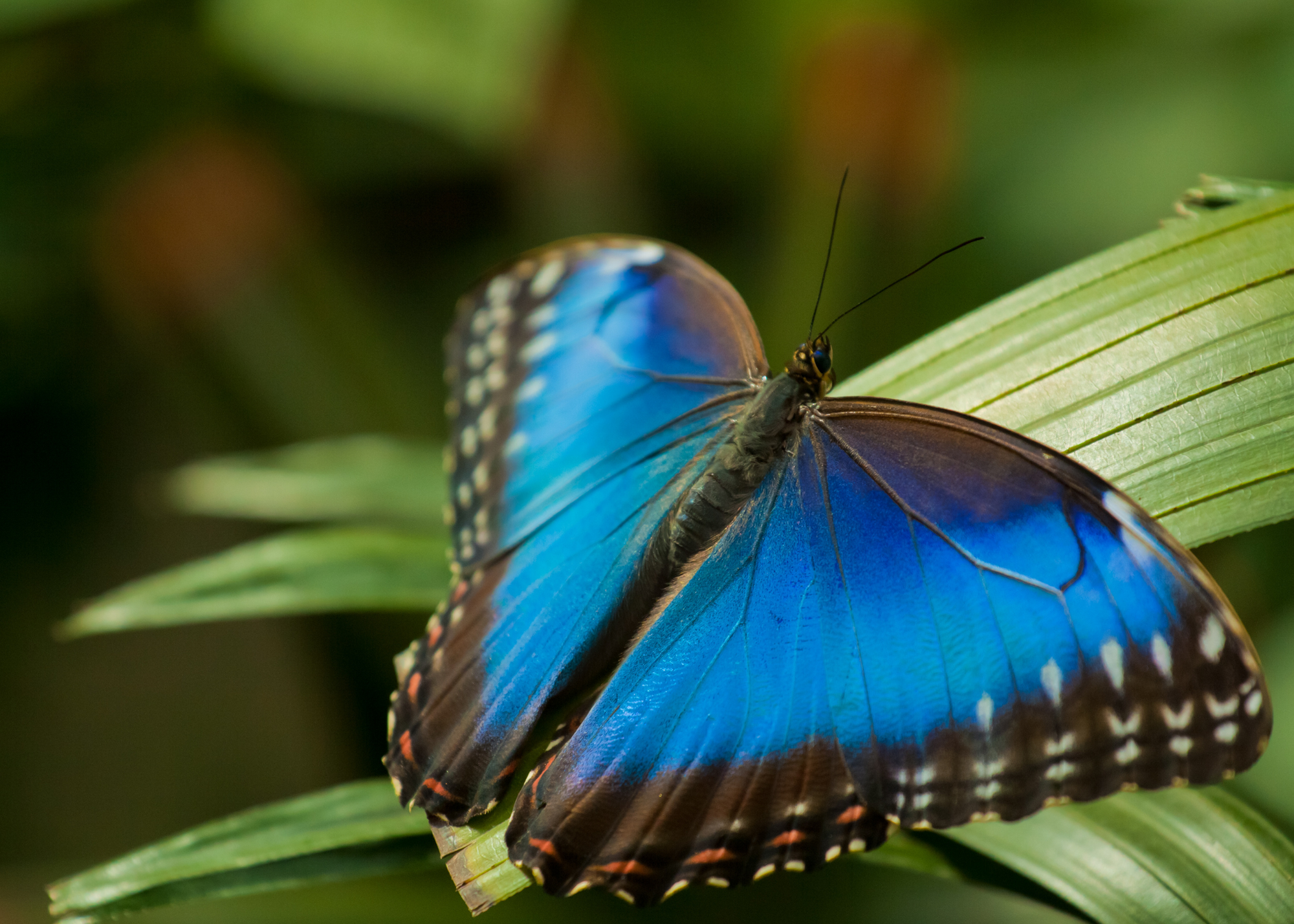
We Invite You to Join Us
It is hard to encompass all the wonders of Monteverde in one solid post, especially due to some of the powerful feelings you find as soon as you set foot here.
I hope to share a bit of the feeling of joy, safety, and belonging that happens when you live here. Some people say that Monteverde is a mystical healing place. Mystical or not, I know that hiking through its intense trail network or simply sitting to sip hot tea calms the senses and the mind and reconciles you with everything.
I feel very thankful and privileged to live in Monteverde and hope to stay here for the rest of my days. No matter how far away I travel, I will return home to Monteverde.
Our community invites you to open your heart to the essence of Monteverde and share our delight in its fascinating nature. Contemplate its astounding, diverse ecosystems with us and perhaps share our vision of Monteverde as a possibility for a better world. It is a community and a place that tells us that it is possible to achieve a warm human community in harmony with nature and each other.
Monteverde reminds us that as long as we join efforts, our Earth and humanity can thrive in almost every situation with a wink and a smile.
References:
(1) N.a. “BBC – Religions – Christianity: Quakers.” Bbc.co.uk. 3 Jul. 2009. Web. 25 Oct. 2021. https://www.bbc.co.uk/religion/religions/christianity/subdivisions/quakers_1.shtml
(2) Monteverde Fund. “Our Story | Monteverde Community Fund.” Monteverde Fund. n.d. Web. 26 Oct. 2021. https://www.Monteverdefund.org/our-story
(3) The Costa Rica Pacific Slope Pacific Slope Trail Network is a vision to link forests and rural communities along Costa Rica’s Pacific Slope. It begins in the famous Monteverde conservation region. It will encompass a network of trail systems, huts, conservation properties, ecological agriculture initiatives, alternative energy, and wastewater treatment and water conservation projects. SAN LUIS DE Monteverde. “Pacific Trail | SAN LUIS DE Monteverde.” SAN LUIS DE Monteverde. n.d. Web. 26 Oct. 2021. <http://sanluis.or.cr/en/pacific-trail/>
This article was published first in: https://blog.ocoteahotel.com/whats-the-allure-of-monteverde
The most important questions in life. At least for me.
The two most important questions in life, for me, are: What is God? and What am I? And yes, one may answer the other one… But, truly, is there a possible answer in perception for these two labyrinths?
If there is a bottom line to understand anything I have to say this:
You see, I cannot be an atheist. It is not logical. I think it is even primitive and quite stupidly arrogant to consider that there is no intelligence behind everything we see.
It is so freakin’ evident!
I don’t know where did I hear this (It’s not mine), but thinking that there is no intelligence behind the Universe is like looking at an iPhone and thinking that its design came out of a biochemical or geological accident.
Not logical.
There is such an obvious intelligence in everything.
Like a perfect fractal, this impressive network extends into the microscopic as much as to the telescopic and goes from the undecipherable brightness in the eyes of a child to the indiscernible reason for cruelty to exist in our mind’s perception.
My question is never if there is intelligence or not. Duh! Everything within my reach speaks out loud about an intelligence behind everything, human or not.
The question is
“What the fuck is that Intelligence?”
And from that one question, some are derived, Where does it come from? What is the source?
No, I don’t believe in any particular book to give me the answer to that. Not even the Course.

Nor do I believe in a human-shaped god, or a man in the sky for that matter. I don’t know if Jesus existed, and although there are plenty of records of Siddartha Gautama and Mohammed, I don’t know if they existed either or if they are one more fragment of my all-powerful God’s imagination. I may be It…But I didn’t create my own intelligence. It was preinstalled by the time I was born.
But then that leads me to ask… Was I really born? memories are as imaginative as plans about the future.
So, that leads me to a second question:
“What the fuck am I?”
These, I have found are the only two questions that matter in my life. The rest are pure entertainment.
Is this really a blog about Costa Rican art?
There are four reasons to write it. The obvious one, SEO, the narcisistic one: my words are needed. the generous one: I want other artists to have a platform. The true one: I want to learn. And I learn when I communicate.
Continue readingManuel Antonio National Park, an insiders\’ guide
Manuel Antonio National Park and its surrounding region are one of Costa Rica\’s most comprehensive tourist destinations. It boasts beautiful beaches, a vibrant rainforest, plenty of wildlife sightings, and a superb selection of lodgings, activities, restaurants, and other experiences for any traveler.
Continue reading